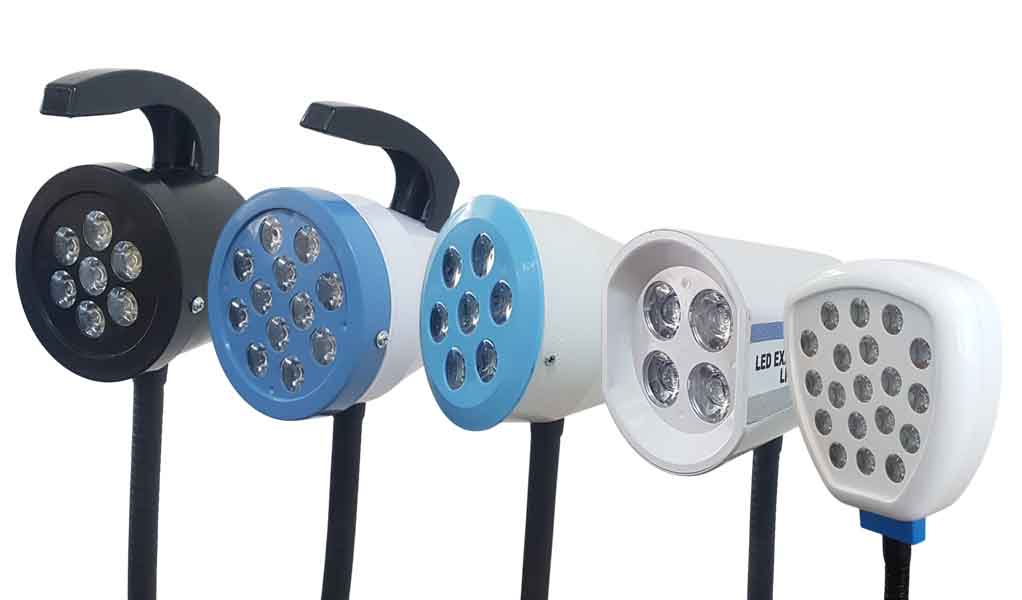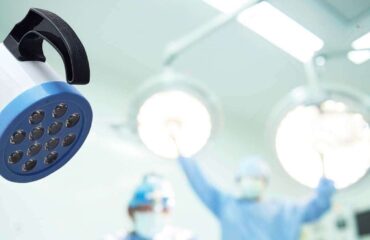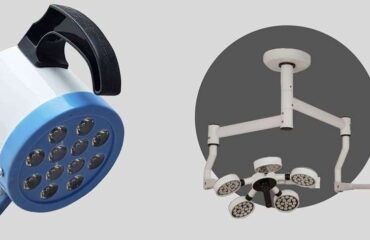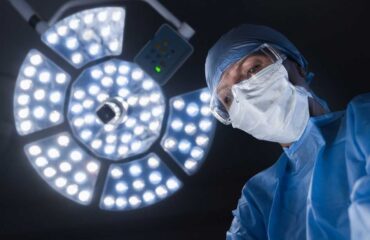A hospital examination light is a specialized medical lighting device designed to provide bright, focused, and shadow-free illumination during patient examinations and minor medical procedures. These lights are essential for healthcare professionals to accurately assess a patient’s condition, perform diagnostics, and carry out treatments.

Types of Hospital Examination Lights
Hospital examination lights come in various types, each designed for specific medical applications. Below are the main types with detailed descriptions:
Mobile Examination Lights
These lights are mounted on a wheeled stand, making them easy to move between examination rooms or different areas within a hospital or clinic.
Key Features:
- Adjustable height and light head positioning.
- LED or halogen light sources.
- Can be used in outpatient clinics, emergency rooms, and minor procedure areas.
Common Uses:
- General patient examinations.
- Minor surgical procedures.
- Emergency care situations.
Wall-Mounted Examination Lights
Fixed on a wall bracket near the examination table, these lights provide a stable and space-saving illumination solution.
Key Features:
- Fixed installation ensures stability.
- Articulated arms allow flexible positioning.
- Ideal for rooms with limited floor space.
Common Uses:
- Outpatient department (OPD) rooms.
- Dermatology clinics.
- Dental and gynecology examinations.
Ceiling-Mounted Examination Lights
Suspended from the ceiling, these lights provide shadow-free illumination and free up floor space.
Key Features:
- Wide coverage and powerful illumination.
- Adjustable arms and multiple LED modules for uniform lighting.
- Often used in combination with surgical lights in operating rooms.
Common Uses:
- Intensive Care Units (ICUs).
- Emergency rooms (ERs).
- Operating theaters (OTs) for minor procedures.
Headlamp Examination Lights
A wearable light source, typically mounted on a headband, to provide hands-free illumination directly at the point of interest.
Key Features:
- Lightweight and comfortable for extended use.
- Rechargeable battery or wired power options.
- Adjustable focus and brightness.
Common Uses:
- ENT (Ear, Nose, and Throat) examinations.
- Dental procedures.
- Neurosurgery and microsurgery.
Table-Mounted Examination Lights
Attached to an examination table, these lights provide focused illumination for close-up procedures.
Key Features:
- Compact and space-efficient.
- Adjustable arm for precise positioning.
- LED or halogen options.
Common Uses:
- Gynecology and urology procedures.
- Minor wound care.
- Small laboratory examinations.
Fiber Optic Examination Lights
Uses fiber optic technology to deliver cool, focused light without heat emissions. The light source is typically remote, with a flexible cable delivering illumination.
Key Features:
- Provides shadow-free and heat-free illumination.
- High-intensity light without infrared emissions.
- Flexible light guide for precise positioning.
Common Uses:
- Endoscopy and laparoscopic procedures.
- Microsurgery and delicate examinations.
- Dental and ophthalmology applications.
LED Examination Lights
Modern LED-based examination lights that offer energy efficiency, longer lifespan, and minimal heat production.
Key Features:
- High CRI (Color Rendering Index) for accurate tissue color visualization.
- Longer lifespan (50,000+ hours) compared to halogen lights.
- Dimmable settings and adjustable focus.
Common Uses:
- General and specialized medical examinations.
- Dermatology and cosmetic procedures.
- Emergency and intensive care units.
Benefits of Examination Lights
Examination lights play a crucial role in medical settings by providing optimal illumination for patient diagnosis, treatment, and minor surgical procedures. Here are the key benefits:
Enhanced Visibility and Accuracy
- Bright and Focused Light – Provides clear, shadow-free illumination for accurate diagnosis.
- High Color Rendering Index (CRI) – Ensures true-to-life color representation, crucial for examining tissues and skin conditions.
- Adjustable Intensity & Focus – Helps doctors and nurses customize the light for different medical needs.
Reduced Eye Strain for Medical Professionals
- High-quality illumination reduces glare and eye fatigue for doctors and nurses working long hours.
- Consistent brightness and focus eliminate the need for external light sources.
Infection Control & Hygiene
- Many lights come with touchless or sterile control options to minimize the risk of contamination.
- LED lights generate less heat, reducing bacterial growth and keeping the examination area clean.
- Antimicrobial coatings on some lights further enhance infection prevention.
Energy Efficiency & Cost Savings
- LED examination lights consume up to 80% less energy than traditional halogen lights.
- Longer lifespan (50,000+ hours) reduces replacement costs.
- Low maintenance costs due to durable and long-lasting components.
Comfort for Patients
- Minimal Heat Emission – Keeps the patient comfortable during longer examinations.
- Adjustable Brightness – Prevents discomfort from excessive light intensity.
Versatility for Different Medical Applications
- Available in mobile, wall-mounted, ceiling-mounted, headlamp, and fiber optic designs for various needs.
- Useful in general examinations, dermatology, gynecology, dentistry, surgery, and ICUs.
Shadow-Free and Even Illumination
- Advanced LED technology ensures uniform lighting with minimal shadows.
- Multiple light sources or diffusers help distribute light evenly over the examination area.
Portability and Easy Adjustability
- Mobile examination lights provide flexibility for use in multiple rooms.
- Adjustable arms and swiveling heads allow precise positioning.
Conclusion
Examination lights are essential for precision, efficiency, and safety in hospitals. They enhance visibility, reduce costs, improve hygiene, and increase patient comfort. Investing in high-quality LED examination lights benefits both healthcare professionals and patients.


